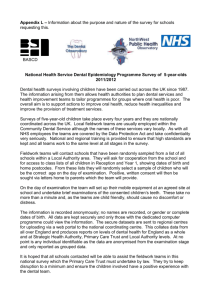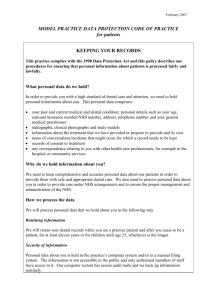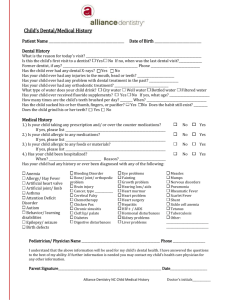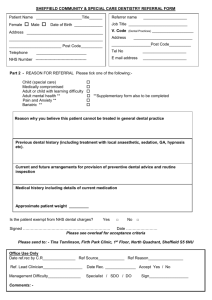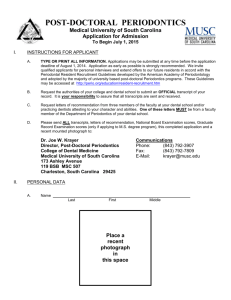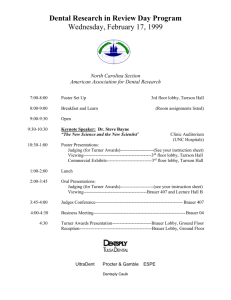Appendix C – Information about the purpose and nature of the survey.
advertisement
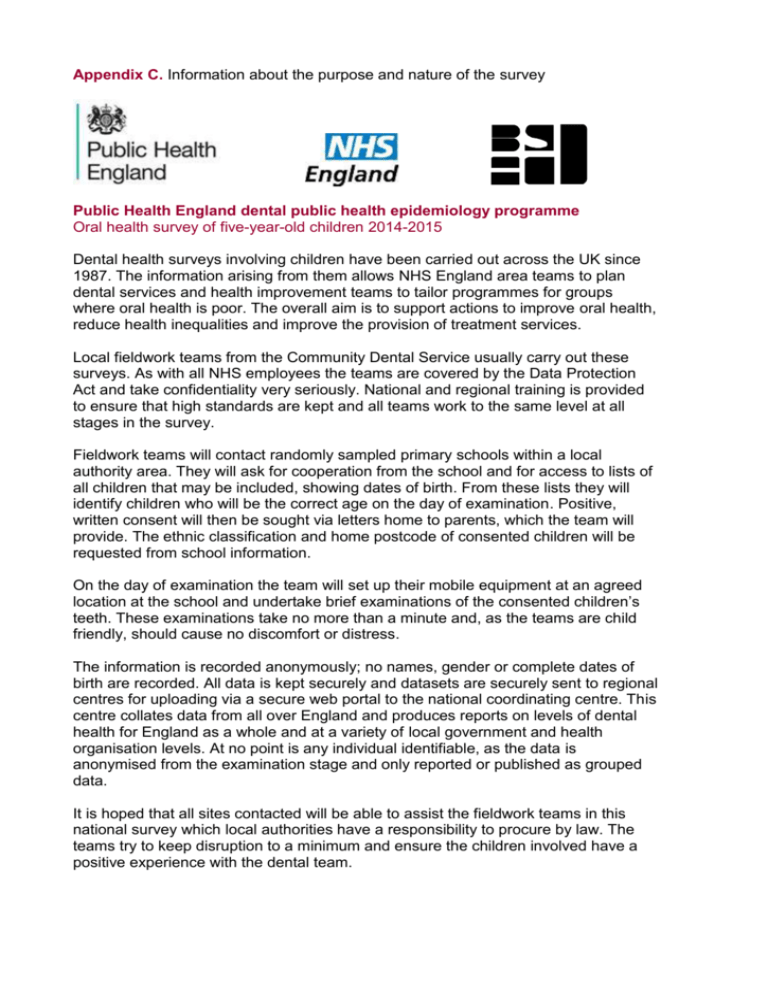
Appendix C. Information about the purpose and nature of the survey Public Health England dental public health epidemiology programme Oral health survey of five-year-old children 2014-2015 Dental health surveys involving children have been carried out across the UK since 1987. The information arising from them allows NHS England area teams to plan dental services and health improvement teams to tailor programmes for groups where oral health is poor. The overall aim is to support actions to improve oral health, reduce health inequalities and improve the provision of treatment services. Local fieldwork teams from the Community Dental Service usually carry out these surveys. As with all NHS employees the teams are covered by the Data Protection Act and take confidentiality very seriously. National and regional training is provided to ensure that high standards are kept and all teams work to the same level at all stages in the survey. Fieldwork teams will contact randomly sampled primary schools within a local authority area. They will ask for cooperation from the school and for access to lists of all children that may be included, showing dates of birth. From these lists they will identify children who will be the correct age on the day of examination. Positive, written consent will then be sought via letters home to parents, which the team will provide. The ethnic classification and home postcode of consented children will be requested from school information. On the day of examination the team will set up their mobile equipment at an agreed location at the school and undertake brief examinations of the consented children’s teeth. These examinations take no more than a minute and, as the teams are child friendly, should cause no discomfort or distress. The information is recorded anonymously; no names, gender or complete dates of birth are recorded. All data is kept securely and datasets are securely sent to regional centres for uploading via a secure web portal to the national coordinating centre. This centre collates data from all over England and produces reports on levels of dental health for England as a whole and at a variety of local government and health organisation levels. At no point is any individual identifiable, as the data is anonymised from the examination stage and only reported or published as grouped data. It is hoped that all sites contacted will be able to assist the fieldwork teams in this national survey which local authorities have a responsibility to procure by law. The teams try to keep disruption to a minimum and ensure the children involved have a positive experience with the dental team.

